1977-1981 Toyota Celica RA40 - Buyer's Guide



|
Naturally the one that I wanted was the version that was even scarcer
Toyota Celica RA40
The attraction of a particular car as something a bit special is a bit hard to pin down. So, in the manner of blondes-versus-redheads, this is going to get personal, but I’ll give it a go anyway.
For my hard-earned, a car that is going to take up residence at the MBC and have any chance of staying there (generally) needs to be possessed of a few elements. Obviously, I have to like the look of the thing, and it can’t be a complete turd to pilot. But I’m also a sucker for chrome bumpers, I kind of dig left-field cars and I’m always swayed by something with a Bathurst track-record from the golden years. And if it’s old enough for a club permit instead of full-whack rego, then all the better. So, yeah – and here’s something you don’t hear every day – the RA40 Celica was a natural fit.

Funny thing is, for a car that nobody with both oars in the water seems to want, RA40s aren’t exactly falling out of the trees. Rust claimed a percentage of them, age and kilometres accounted for more (they’re 40 years old, remember) and the fact that they were worth precisely nothing even a handful of years ago meant that plenty were just scrapped and crushed to get them out of the front yard. Throw in the ones that were driven up trees by idiots like me, and you won’t be kicking them out of the way as you put the bins out.
| Read next: 1971-77 Toyota Celica buyer's guide
Naturally, the one I wanted was the version that was even scarcer. See, there was a facelift of the RA40 in 1979 that added the rectangular headlights and, crucially, big rubber impact bumpers aimed at the North American market. I wanted the chrome bumper model with the round headlights, so that cut my prospects by about half. But I was also chasing the coupe version rather than the rather rumpy liftback. Yeah, I know a liftback would be more practical, but this stuff has nothing to do with being sensible. And for mine, the coupe is the tougher looking gadget. Typically, the liftback is the one you’re more likely to see in the adverts so, again, I was making it hard for myself.
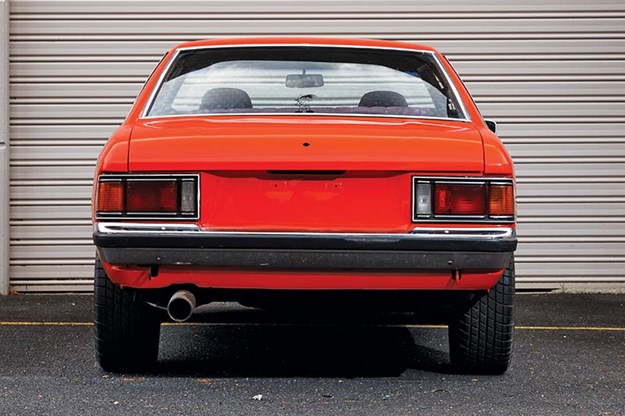
Now, I’m not making this up, but I first suggested to a few mates around a campfire (at the 2017 Bathurst 12-Hour, actually) that I was kind of looking for an RA40 Celica. Three of them thought I was mad, one thought it was a `courageous’ choice of car, but none of them had any idea how serious I was about this. Which means I’ve spent the last two goddam years checking the usual websites and online auction sites pretty much every day. I looked at a couple of cars along the way, but the right one just hadn’t shown up. Until a few weeks ago when this bright orange jigger appeared online.
| Read next: 1979 Toyota Celica LT reader resto
I’d just missed a car I probably would have bought by mere hours, so I was kind of on the rebound when I spotted this one (it never rains, etc). I grabbed the phone and organised to take a peek at the weekend. What saved me from fighting over the car with a bunch of other nutters was that it was out in the sticks, about three hours from Melbourne. I like that; it acts as a tyre-kicker filter. And a road trip to go and suss out a new prospect? Hell, I’m all over that.
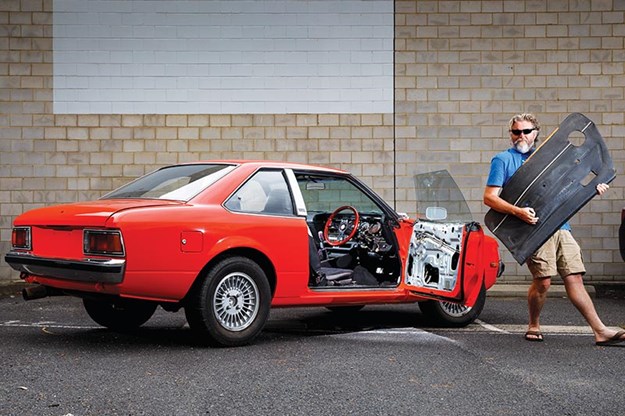
The big benefit of this car is that the bodywork and paint are terrific. It was painted about 13 years ago and wheeled into a shed. Apparently there were only one or two spots of rust that needed to be fixed and they haven’t returned, so they must have been repaired properly. I reckon I’d be somewhere between five and ten large getting a roughie to this condition, so the old adage that you should buy the best body and forget about the cheap-to-fix mechanicals seems to hold water after all.
And what about the mechanicals and the rest of the car? Er, the less said the better in a way. The interior is junk. I’m not even game to remove the dashpad to have it repaired, because I’m certain it would disintegrate in the process. Dunno what I’m going to do there. The car also needs new door trims and front seats but the roof lining is, surprisingly, mint.
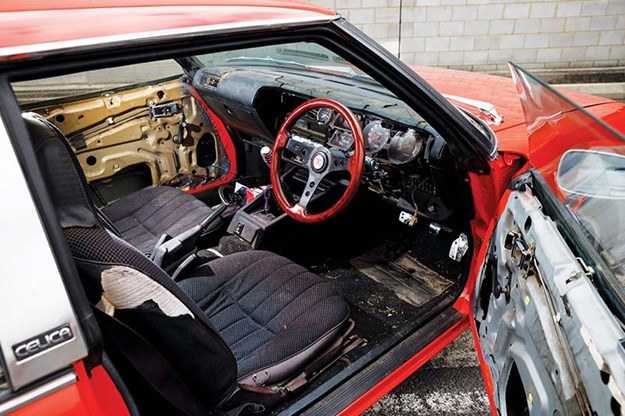 Sun ravaged and now a renovators delight
Sun ravaged and now a renovators delight
The engine is the dunger old 18RC which sounds like the pits, but in this case might be okay. It seems like somebody has spent a bit on the old single-cammer, because the idle is lumpier than golf-ball custard and there’s absolutely no blow-by or oil leaks. The gearbox feels minty fresh and shifts beautifully which was always a hallmark of these five-speeds. The suspension has, however, seen better days so I’ll be junking all that and fitting slightly lower springs and some Monroe GT Gas dampers that I’ve had huge success with in the past and really bring the lightweight (under a tonne, I read somewhere) RA40 back to life.
The steering feels tight, but those 70-series tyres and rattle-canned rims have gotta go. I found a second-hand set of 15-inch Rotas (very JDM) with good tyres, so they’ll be bolted on once the suspension is done and she’s back on her wheels. So, yeah, it’s very much a work in progress, but one that’s had me licking my lips for nearly two years. In fact, my RA40 affliction goes back much further than that – right back to the late 70s watching Peter Williamson’s RA40 carving through the Capris and Geminis at Bathurst and the tacho needle on the dash (racecam view) buzzing to 8000rpm on the upshifts and never falling below 6000.

All up, I reckon I can pull this off for about ten-grand total at which point I’ll have a car that is undeniably my own and one that might even make people stop and think about RA40 Celicas in a whole new way. Which could simply mean thinking about them at all.
VALUE RANGE: TOYOTA CELICA RA40
FAIR: $3000
GOOD: $6500
EXCELLENT: $11,000 (Liftback manual)
(Note: concours cars will demand more)
TOYOTA CELICA RA40 MARKET REVIEW
- Cliff Chambers
Being an RA40 Celica in the wake of the beloved RA28 ‘Mustang’ version must have been a bit like following Bocelli on-stage at a tenor festival.
The Celica that appeared here in 1978 was precisely the car that its target audience of urban professionals craved. However it wasn’t very fast and didn’t handle very well and magazine road-testers didn’t like it. Their opinions would for decades help inhibit value movements even though the RA40 rode like it had gel inserts in its tyres and offered a classy interior with plenty of included equipment.
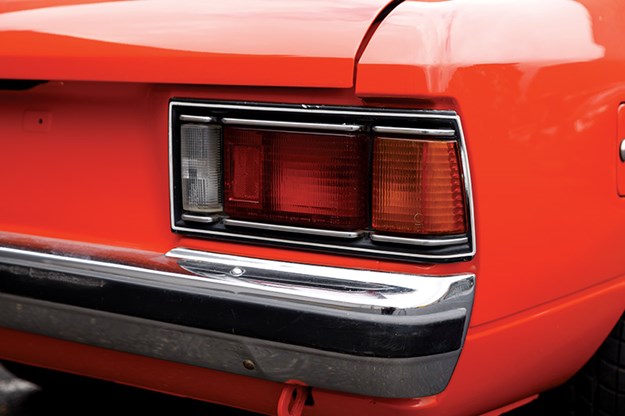
Most RA40s in the current market will be automatics and the three-speed tranny doesn’t do the single OHC engine any favours. If you can find a five-speed and leave a bit in the budget for some suspension upgrading the outcome should be pleasantly surprising.
Enthusiasts for a long time avoided owning an RA40 but that is changing. One Brisbane-based association of Celica owners is specifically targeting RA40 owners as new members.
The British market which normally provides an indication of growing popularity turned up a couple of GT2000 models with the more potent twin-cam engine and prices that when converted to AUD$ topped $20,000.
What to spend on a single-cam car in our market is obviously dependent on that car’s condition and also what degree of history it brings. Spare parts included as part of the deal is a great incentive as well because bits for older Celicas are getting scarce. Assuming a tidy five-speed manual Liftback is going to make $10-12,000 then an ordinary coupe with fading paint and auto transmission should cost less than $5000. As a stylish, relatively scarce car with ‘project’ potential that is not a bad deal.
.jpg)
BUYER'S CHECKLIST
Body & chassis
Toyotas from the 1970s, locally assembled or fully imported like the Celica, were generally unlikely to fall to bits in under 25 years. Rust protection was decent, however Toyota’s best efforts could be negated by one slap-dash body repair. Even before test-driving, a quick check for rust in the obvious spots is recommended, followed by a proper on-hoist check. Look at the windscreen aperture for bubbling, door shells from underneath, door skins, the hatch and sills. If the outer sills are full of filler you can nearly guarantee the structurally important inners will be crumbling to dust. Where there is one, check that the hatch stays up – replacement struts are $55-75 each – and the rubber seal isn’t letting in water and exhaust fumes.
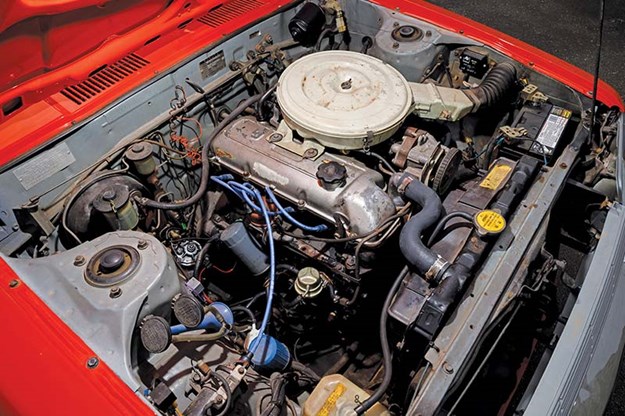
Engine & transmission
The 18R engine was used in millions of Toyotas and engine parts are plentiful. If you’re not keen on reconditioning a worn original engine and matching numbers aren’t a priority, plenty of good used engines are available – prices begin below $1000. Obvious problems are smoke and rattles at start-up.
Ticking from the valve train is a less immediate concern. Cylinder head work, twin carburettors and exhaust extractors are common modifications that can boost power to around 90kW. RA40 transmissions are common to many Toyota models and will be cheaper to replace than repair. Fast changes can confuse manual cars’ synchromesh, causing crunches even when there’s nothing wrong with the gearbox internals.
Suspension & brakes
Here’s the place where money spent cleverly can produce a major transformation. RA40 spring and damper rates were biased towards ride quality and understeer was the prime handling trait. Undoing Toyota’s soft and bouncy approach will require analysis of your car’s problems by a suspension specialist and varying levels of outlay depending on the result you expect to achieve. Even if you are extracting extra power from your Celica engine, the standard disc front/drum rear brakes if properly maintained will be adequate. Warped or scored rotors are cheap to replace but make sure the handbrake still works as fixing that is a fiddly task.

Interior & electrics
This is where the deal on a Celica might be made or broken. A car that’s been maintained and kept away from harsh sun will reward that care by maintaining its interior fabric and plastics in usable condition. Cars that have been neglected and even some that haven’t will suffer significant deterioration particularly to the dash area. The worst will have their plastic parts covered in a powdery residue as components disintegrate. Make sure the switches work as these will need to be replaced second-hand. However, we did find new indicator switch assemblies at under $100.
1977-1981 Toyota Celica RA40
NUMBER MADE: 900,000 (approx)
BODY STYLES: steel integrated body/chassis two-door coupe & liftback
ENGINE: 1968cc four cylinder with overhead camshaft and single downdraft carburettor
POWER & TORQUE: 66kW @ 5000 rpm, 145Nm @ 3600rpm
PERFORMANCE: 0-96km/h 15.5 seconds, 0-400 metres 19.2 seconds (manual)
TRANSMISSION: five-speed manual, three-speed automatic
SUSPENSION: Independent with struts, coil springs & anti-roll bar (f), Live axle with coil springs, locating links and telescopic shock absorbers (r)
BRAKES: disc (f) drum (r) with power assistance
TYRES: 165SR14 radial
Unique Cars magazine Value Guides
Sell your car for free right here
Get your monthly fix of news, reviews and stories on the greatest cars and minds in the automotive world.
Subscribe

.jpg)














